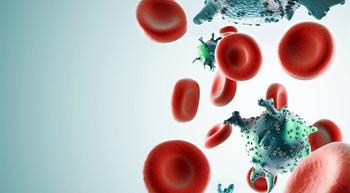
Dose-Dense Chemotherapy Improves Disease-Free Survival in HR+/HER2- Breast Cancer
Researchers found that neoadjuvant chemotherapy with intense dose-dense Ellence (epirubicin), Taxol (paclitaxel), and Cytoxan (cyclophosphamide) (iddEPC) demonstrated significant disease-free survival benefits in the treatment of patients with HR+/HER2- breast cancer.
Neoadjuvant chemotherapy of intense dose-dense Ellence (epirubicin), Taxol (paclitaxel), and Cytoxan (cyclophosphamide) (iddEPC) offered significant disease-free survival benefits in patients with HR+/HER2- breast cancer, according to data presented at the 2020 ESMO Virtual Congress.
As well as comparing iddEPC to weekly Taxol and Doxil (liposomal doxorubicin) (PM) in patients with high-risk early breast cancer, the GeparOcto trial also examined the addition of Paraplatin (carboplatin) in patients with triple-negative breast cancer (TNBC).
In the review presented at ESMO, researchers reported on the secondary endpoint of invasive disease-free survival (iDFS), defined as the time from randomization until any invasive local regional or distant recurrence, a new contra-lateral breast cancer, a secondary malignancy or death, whichever occurred first. Overall survival (OS) was an additional secondary endpoint.
The GeparOcto trial enrolled a total of 961 patients who were first broken into three groups by breast cancer subtype:
- HR+/HER2- versus HER2-/HR- versus HER2+/HR+/-
- Ki67 at baseline (less than or equal to 20% versus greater than 20%), and
- lymphocyte-predominant breast cancer
These patients were then split into two groups: the iddEPC arm (470 patients) received nine cycles of intensified dose-dense Ellence, Taxol, and Cytoxan, every two weeks, and the PM(Cb) arm (475 patients) received weekly Taxol plus Doxil for 18 weeks.
In both treatment arms, patients with HER2+ breast cancer additionally received Herceptin (trastuzumab) every two weeks and Perjeta (pertuzumab) every three weeks concurrently with each Taxol and Paraplatin cycle. Patients with TNBC also received weekly Paraplatin.
Between December 2014 and June 2016, a total of 945 patients started treatment. After a median follow-up of 47 months, 162 iDFS events were reported, the majority of which were distant relapses (47 in iddEPC versus 51 in PM(Cb)) and invasive locoregional relapses (18 versus 24). Additionally, 79 deaths were reported (41 in the iddEPC arm and 38 in the PM(Cb) arm).
When examining survival benefits, researchers found no significant difference in survival rates between the HER2+ or TNBC subgroups.
Additionally, investigators found no difference in iDFS or OS between both arms, with four-year iDFS at 81.9% following iddEPC versus 79.7% in PM(Cb). Overall survival after four years was 90.6% and 90.3% respectively.
However, four-year iDFS was significantly longer in the HR+/HER2- subgroup of the iddEPC arm (77.9% versus 62.5% PM), which indicated a benefit in four-year OS (80.1% versus 94.7% respectively).
In an exploratory analysis, researchers found that in patients with a higher likelihood of relapse following neoadjuvant chemotherapy based on their CPS-EG score, which calculates the risk of relapse following neoadjuvant chemotherapy, those with HR+/HER2- breast cancer were 3.5 times more likely to experience an iDFS event following weekly PM(Cb) compared to those who received iddEPC.
Despite the lack of evidence of improved survival, the iDFS benefit supports the idea that neoadjuvant chemotherapy could have an additional effect in patients with luminal-like, HER2-negative breast cancer, according to Andreas Schneeweiss, the lead author of the paper. These benefits could be possibly due to the inclusion of cytotoxic agent cyclophosphamide.
“Cyclophosphamide might play an important role in adjuvant treatment of patients with high risk, HR+/HER2- breast cancer, maybe due to an immunogenic long-term effect, not indicated by pCR and CPS-EG score,” concluded Schneeweiss.
For more news on cancer updates, research and education, don’t forget to




